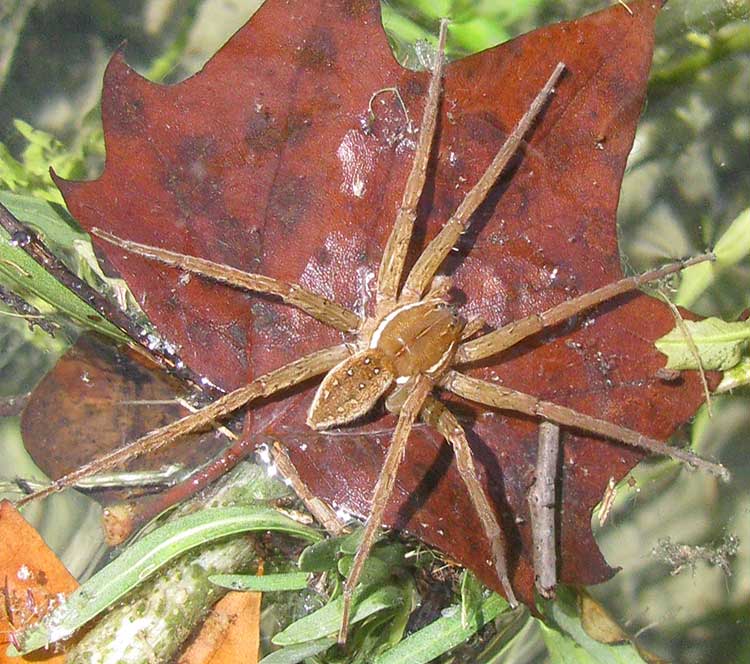Excerpts from Jim Conrad's
Naturalist Newsletter

from the September 30, 2012 Newsletter issued from the valley of the Dry Frio River in northern Uvalde County, southwestern Texas, on the southern border of the Edwards Plateau; elevation ~1750m (~5750 ft); N29.62°, W99.86°; USA
FISHING SPIDERS
Sprawled two inches (5cm) across an autumnal sycamore leaf floating atop the little Dry Frio River's clear surface, an unusually big, tan-colored spider with white racing strips on the cephalothorax and white spots on the abdomen basked in the afternoon sun, as shown above.
About two feet away similarly floating atop a shed Chinese Tallow Tree leaf a darker-brown spider also with racing stripes and white spots, but only about half the size and darker, squarely faced the big spider while seemingly being ignored by the larger spider. The smaller spider is shown below:

These were Six-spotted Fishing Spiders, DOLOMEDES TRITON, fairly common throughout the Western Hemisphere. They're also called raft spiders, dock spiders and wharf spiders. In the pictures, the big one is the female and the little one the male. Fishing spiders do sometimes catch and eat small fish and tadpoles, but the more normal fare is insects and other invertebrates. They're excellent divers, submerging and grabbing onto a plant when feeling threatened, plus they can dive over seven inches (18cm) to catch prey.
The little male has good reason for keeping his distance, despite his apparent interest in the big female. This is one of those species in which cannibalism occurs -- the female eating the male after mating, the male thus contributing the protein and nutrients in his body to the next generation.